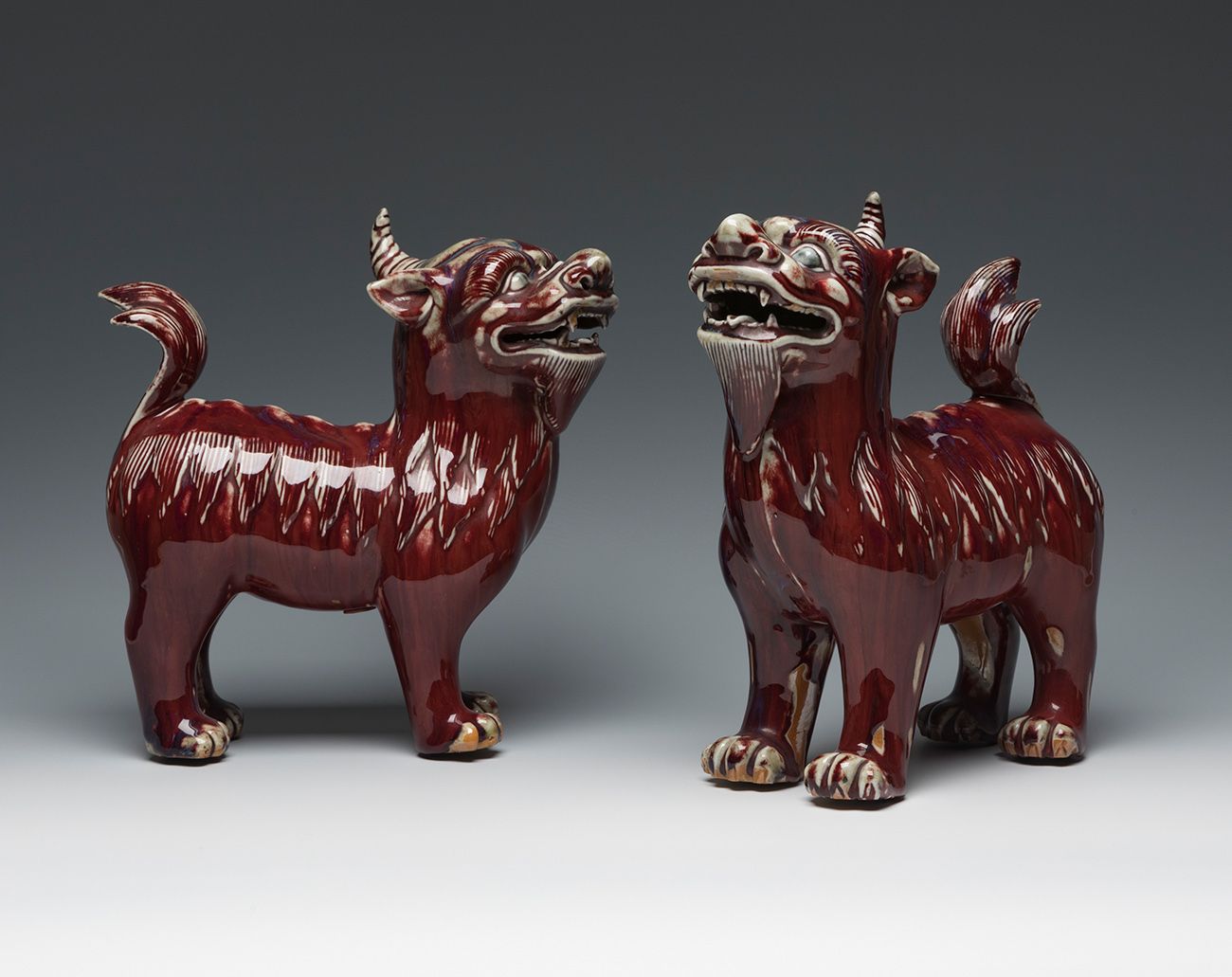Description
Pair of Foo "sang de boeuf" dogs, Qing dynasty. China, 19th century. Hand-polychromed porcelain. Red export wax seals on the back. Measures: 29 x 11 x 25 cm . Wear and tear. This lot can be seen in the SetdartBarcelona Gallery located in C/Aragón, 346. Pair of Foo "sang de boeuf" dogs, Qing dynasty. China, 19th century. In hand painted porcelain. These pieces were made in China for the foreign market (export to other countries). This is confirmed by the sealing wax seals on the back. Sang de boeuf enamel, a deep red ceramic glaze, first appeared on Chinese porcelain in the early 18th century. The name means "ox's blood". Sang de boeuf is a flamed and glazed glaze, marked by unpredictable but highly decorative and varied effects. The foo dog, similar to a lion, is an important symbol in Chinese Taoist culture and, through its influence, also in Japanese and Thai culture. It is identified with protection against evil spirits, and hence they are often depicted in pairs at the entrance of temples, imperial tombs, palaces, government buildings, etc. They are also known as Imperial Guardians, and were very common in traditional Chinese art. They are attributed with mythical powers of protection, and appear as early as the Han Dynasty (206 BC - 220 AD) at the entrance of important buildings.
29
Pair of Foo "sang de boeuf" dogs, Qing dynasty. China, 19th century. Hand-polychromed porcelain. Red export wax seals on the back. Measures: 29 x 11 x 25 cm . Wear and tear. This lot can be seen in the SetdartBarcelona Gallery located in C/Aragón, 346. Pair of Foo "sang de boeuf" dogs, Qing dynasty. China, 19th century. In hand painted porcelain. These pieces were made in China for the foreign market (export to other countries). This is confirmed by the sealing wax seals on the back. Sang de boeuf enamel, a deep red ceramic glaze, first appeared on Chinese porcelain in the early 18th century. The name means "ox's blood". Sang de boeuf is a flamed and glazed glaze, marked by unpredictable but highly decorative and varied effects. The foo dog, similar to a lion, is an important symbol in Chinese Taoist culture and, through its influence, also in Japanese and Thai culture. It is identified with protection against evil spirits, and hence they are often depicted in pairs at the entrance of temples, imperial tombs, palaces, government buildings, etc. They are also known as Imperial Guardians, and were very common in traditional Chinese art. They are attributed with mythical powers of protection, and appear as early as the Han Dynasty (206 BC - 220 AD) at the entrance of important buildings.
